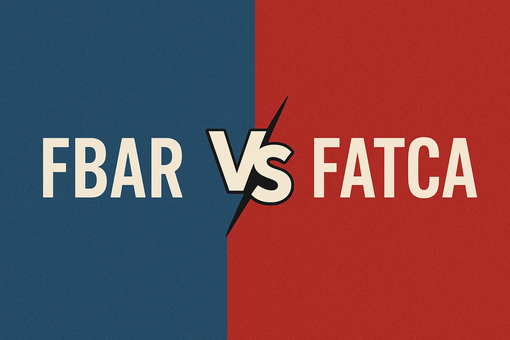IRS Form 2555 instructions: exclude foreign income on your tax return

Living and working abroad can bring incredible opportunities – and complex tax responsibilities. Fortunately, Americans overseas may qualify to exclude a significant portion of their foreign income from US taxation.
This guide is tailored for US citizens and resident aliens navigating Form 2555 to ensure full compliance while maximizing tax savings.
What is Form 2555?
As a US citizen working abroad, you will need the IRS Form 2555 to claim the Foreign Earned Income Exclusion and exclude up to $130,000 of foreign earned income from your 2025 US tax return, an increase from $126,500 in 2024. The form also provides access to the Foreign Housing Exclusion or Deduction and requires passing either the Physical Presence or Bona Fide Residence Test to qualify.
In simpler terms, it’s the form that helps Americans overseas legally reduce or eliminate the taxes they owe on money earned abroad.
Who is eligible to file Form 2555?
To qualify for the foreign earned income exclusion under IRS Form 2555, taxpayers must meet specific criteria related to their income, residence, and presence abroad.
-
You must have foreign earned income
Only income from active work performed in a foreign country – such as wages, salaries, and self-employment earnings – qualifies. Passive income like dividends, interest, or capital gains does not meet the criteria. Check Form 2555 instructions for additional guidance. -
Your tax home must be in a foreign country
A tax home is generally where your main place of business or employment is located. If your primary work location remains in the US, you are not eligible to claim the exclusion. -
You must pass the Physical Presence Test or the Bona Fide Residence Test
The Physical Presence Test requires being physically present in one or more foreign countries for at least 330 full days during a 12–month period. The Bona Fide Residence Test mandates uninterrupted residency in a foreign country for an entire tax year – demonstrating deeper ties and long-term commitment. -
You must not be a US government employee abroad
Income paid by the US government to its employees working overseas does not qualify for the exclusion. However, individuals working for private companies under contract with the US government may still be eligible based on other criteria.
For more details on these qualifying conditions, see IRS Publication 54. To claim the exclusion, you must meet one residency test and may qualify for housing benefits as shown below.
The Physical Presence Test
To qualify, you must pass the Physical presence test by being physically present in one or more foreign countries for at least 330 full days during a 12-month consecutive period, as outlined in Part III of Form 2555. Travel days to or from the US do not count, and each qualifying day must span a full 24-hour period beginning at midnight.
The Bona Fide Residence Test
The Bona Fide residence test requires uninterrupted residency in a foreign country for an entire calendar year (January 1–December 31), detailed in Part II of Form 2555. You must show substantial ties to the country, such as a permanent home, local tax residency, and long-term intent to remain abroad.
The Foreign Housing Exclusion
In addition to excluding foreign earned income, qualified taxpayers may also reduce their US tax liability through the Foreign Housing Exclusion – a provision designed to offset the high cost of living abroad. This exclusion applies to qualified housing expenses, such as rent and utilities, that exceed a base housing amount calculated as 16% of the annual FEIE, or $56.99 per day in 2025.
The total amount you can exclude is subject to a cap – 30% of the 2025 FEIE limit ($130,000) – and may vary based on the geographic location, as outlined by the IRS. You must complete Parts VI, VIII, and IX of Form 2555 to claim this benefit alongside or independently of the Foreign Earned Income Exclusion.
Also read. Foreign Housing Exclusion guide
Form 2555 vs. Form 1116: which should you file?
| Form 2555 – Foreign earned income exclusion (FEIE) |
Form 1116 – Foreign tax credit (FTC) | |
|---|---|---|
| Purpose | Excludes earned income from US taxation | Offsets US tax by crediting foreign taxes paid |
| Best for | Expats in low-tax or no-tax countries | Expats in high-tax countries |
| Type of income covered | Earned income (wages, salary, self-employment) | Passive and earned income |
| Tax savings limit | 2025 limit is $130,000 | No cap on credit – limited to foreign tax paid |
| Form location | attached to Form 1040 | attached to Form 1040 |
| Impact on credits | Forfeits eligibility for Additional Child Tax Credit, IRA deduction | May retain eligibility for some credits |
| Penalty risk if filed late | May lose exclusion if not filed timely | Late filing can reduce credit carryovers |
| Revoke and re-elect rules | 5-year restriction on revocation without IRS consent | No revocation restriction |
| Example of scenario | Self-employed in Dubai with no local tax | Salaried in Germany paying high foreign taxes |
Also read. Form 1116 complete guide
Filing Form 2555 step-by-step
Step 1: Collect detailed records of all foreign earned income for the tax year, including wages, salaries, and self-employment income earned outside the US.
Step 2: Determine if you qualify under either the Physical Presence Test (330 full days abroad in a 12-month period) or the Bona Fide Residence Test (full calendar year abroad), both outlined in Parts II and III of the form.
Step 3: Confirm your tax home is located in a foreign country during the qualifying period as required in Part I.
Step 4: Complete Part VII to calculate the Foreign Earned Income Exclusion, up to the 2025 limit of $130,000, prorated if you qualify for part of the year.
Step 5: Fill in Parts VI and VIII if claiming the Foreign Housing Exclusion or Deduction, using IRS location-specific limits and the daily base threshold of $56.99.
Step 6: Attach Form 2555 to your Form 1040 or 1040SR; if living abroad, you automatically receive a two-month extension, moving the filing deadline to June 16, 2025 for 2024 tax returns.
Form 2555 preview
Before diving into the Form 2555 filing process, verify your FEIE calculations to ensure you meet the 330-day requirement and confirm your exclusion amount. This pre-filing verification helps avoid costly mistakes and potential IRS complications.
Common mistakes to avoid
-
Failing the residency tests: Missing the 330-day rule or full calendar year requirement can disqualify your claim; if filed incorrectly, amend with Form 1040-X and corrected dates.
- Miscalculating exclusions: Using outdated figures can cause errors; for 2025, the maximum FEIE is $130,000 and the base housing amount is $56.99 per day.
- Filing late: If you miss the April deadline, you risk penalties; expats abroad get an automatic extension to June 16, 2025, and can request more time with Form 4868.
NOTE! Mistiming your extension request could forfeit your chance to claim Form 2555 exclusions. Avoid that risk – book our free extension service, valid till October 15.
Need help? Speak with a seasoned tax advisor
Navigating Form 2555 can be complex – between qualifying residency tests, housing exclusions, and strict filing deadlines, there's a tendency of error.
Let Taxes for Expats handle it for you – our licensed tax professionals specialize in US expat returns and will ensure your Form 2555 is filed accurately and on time.
We can clear your doubts.


Stay IRS-compliant with your business abroad – we’re ready to help


